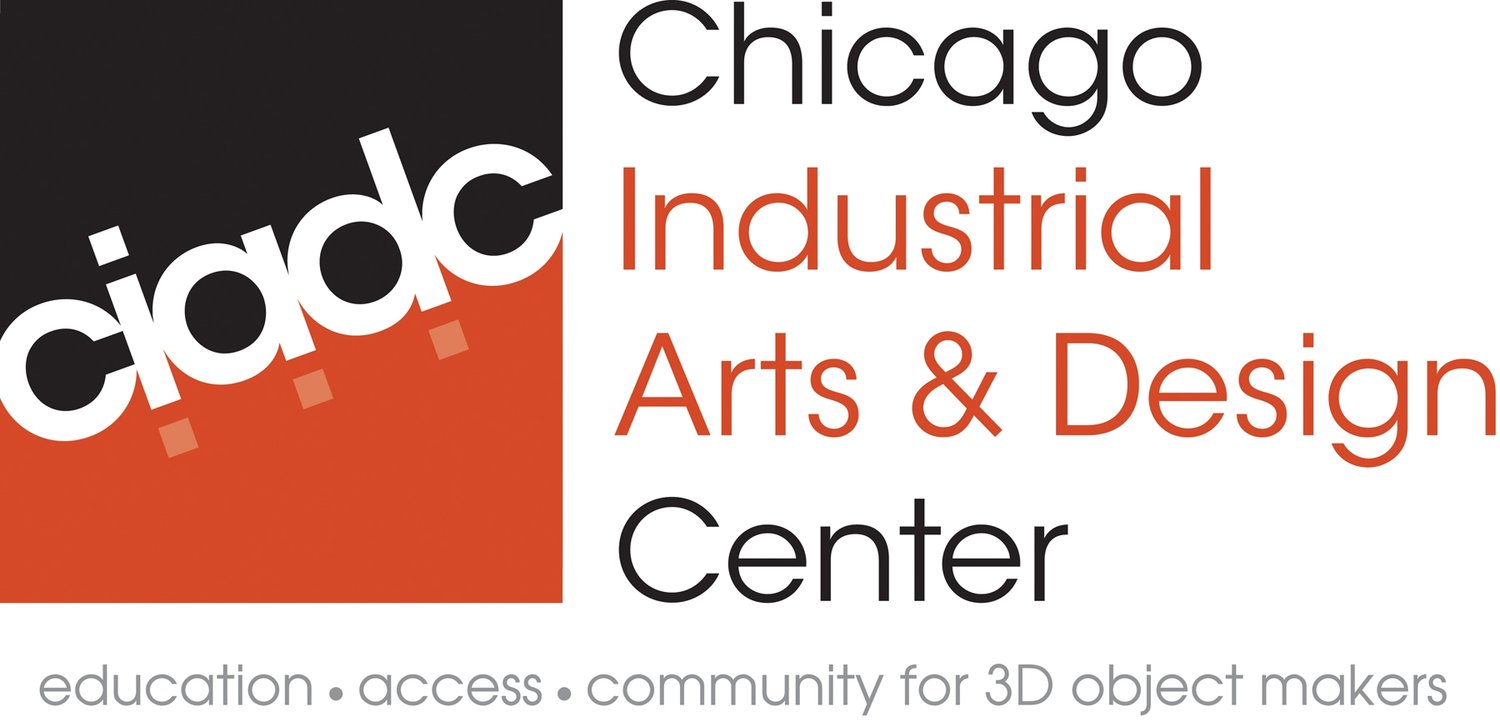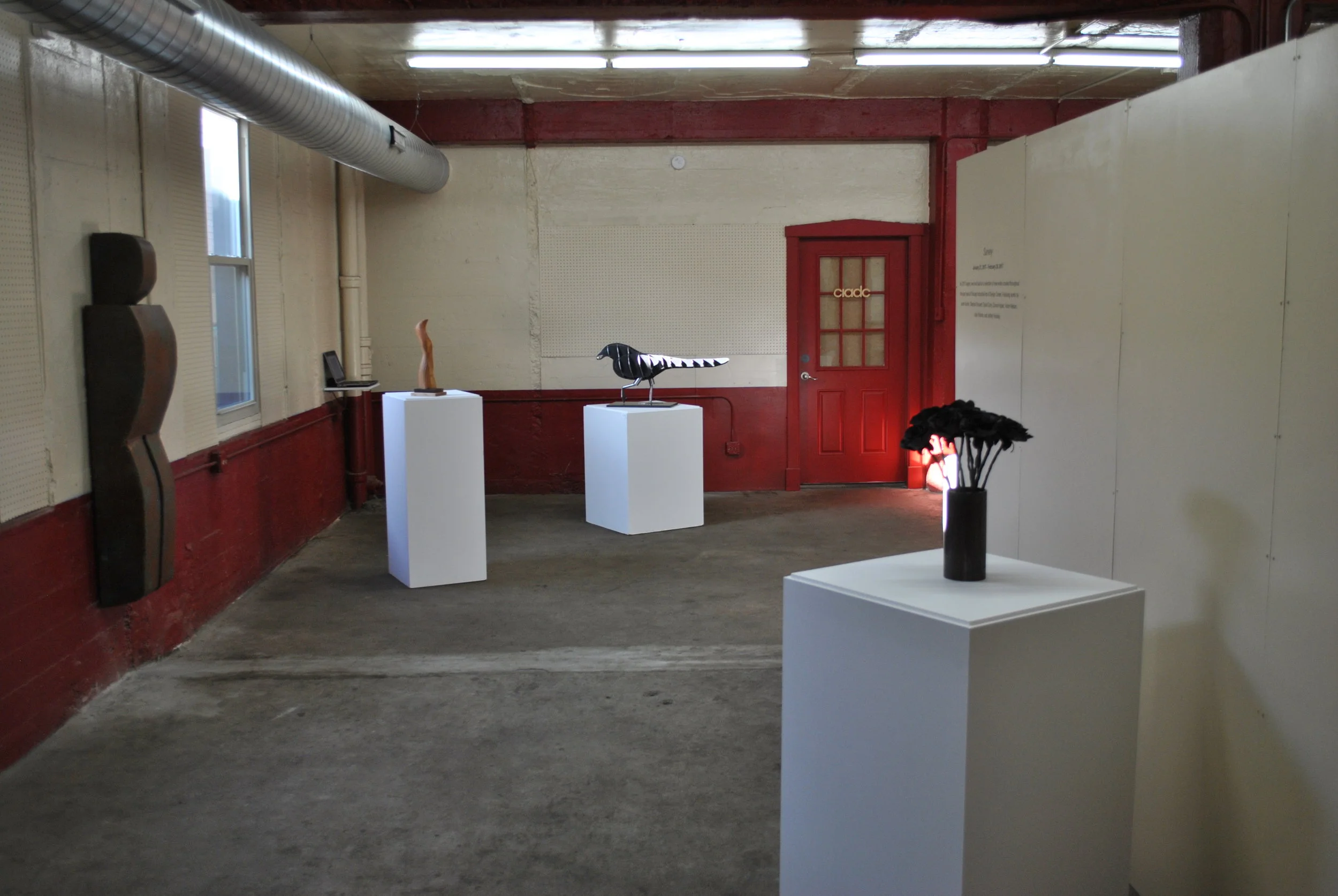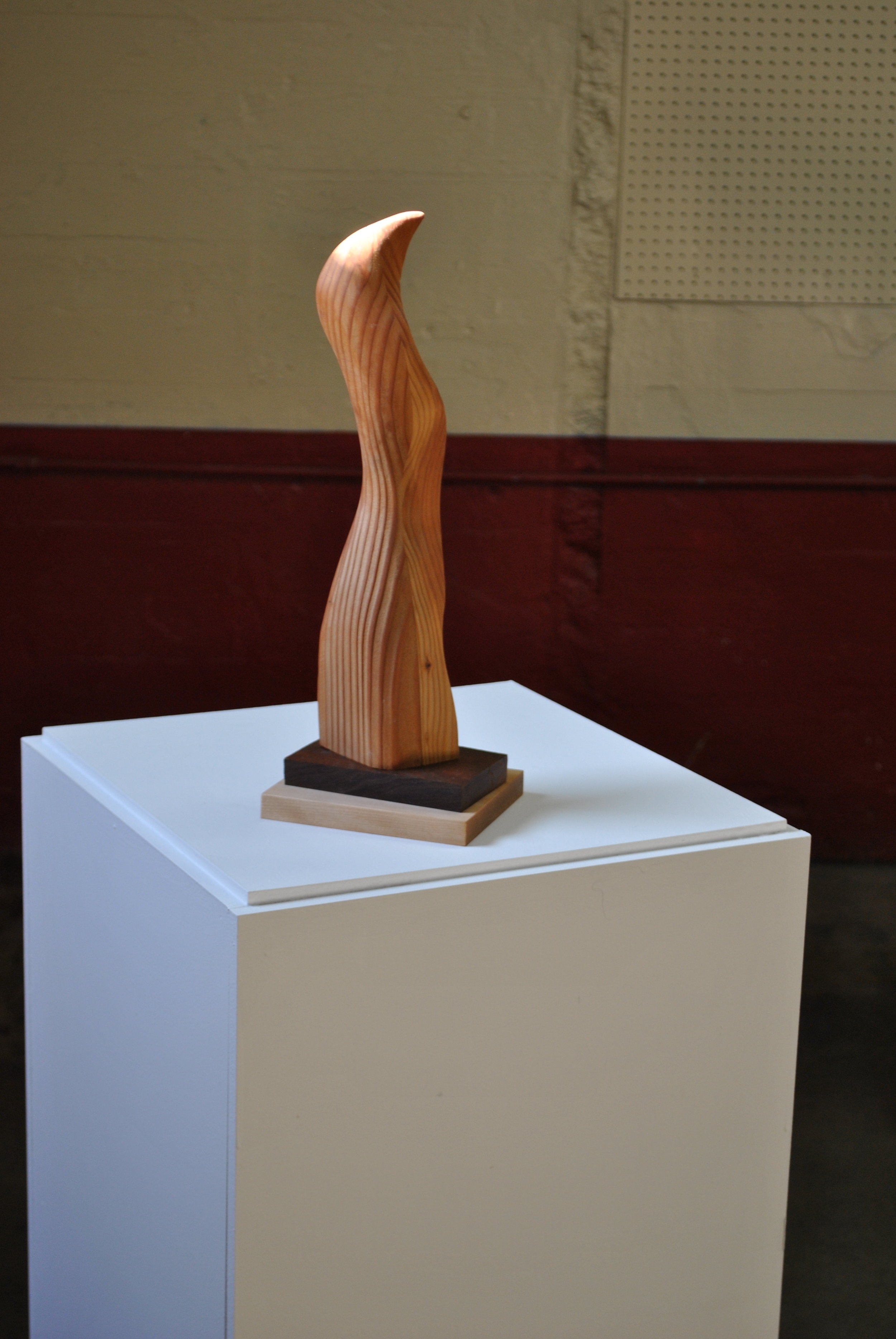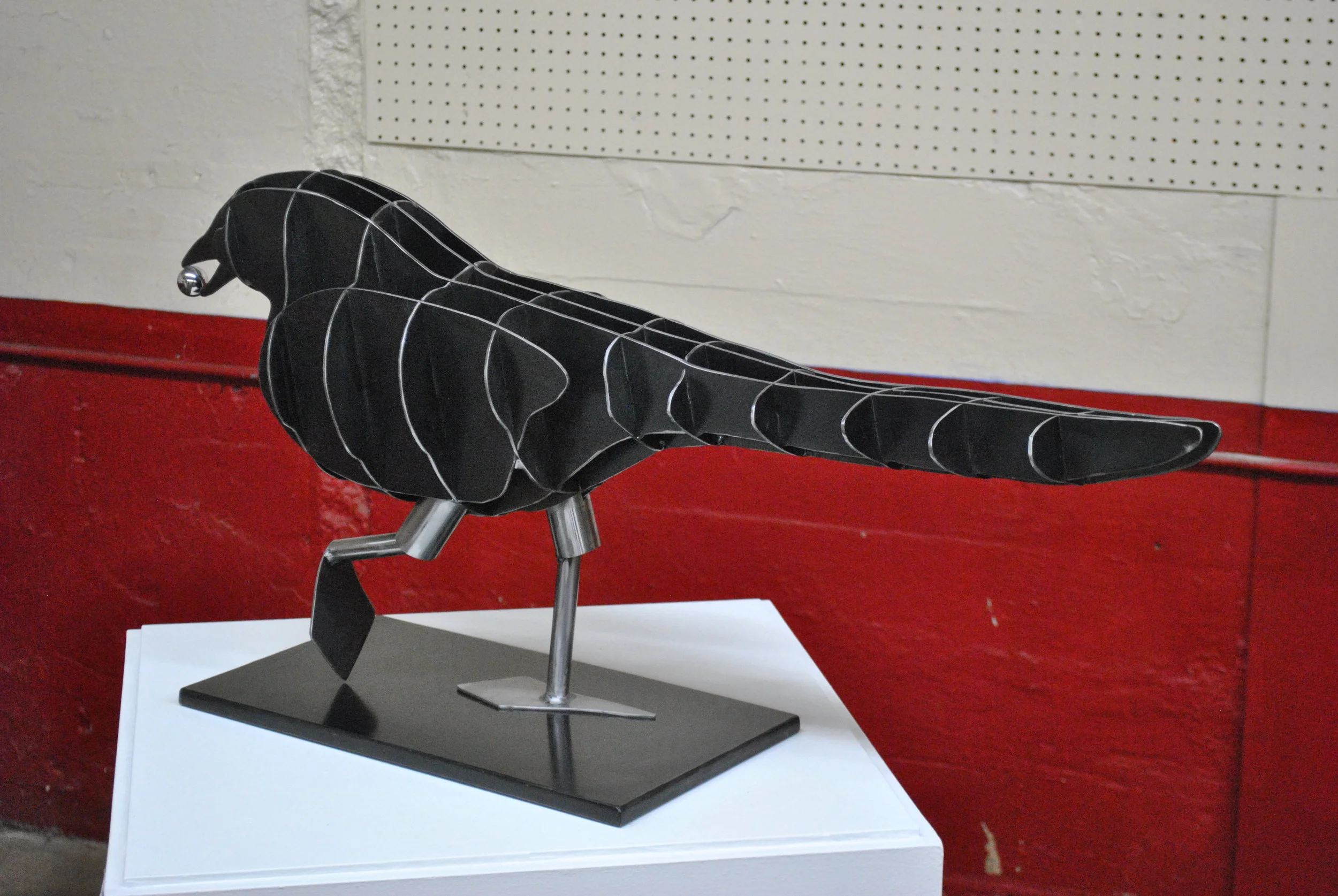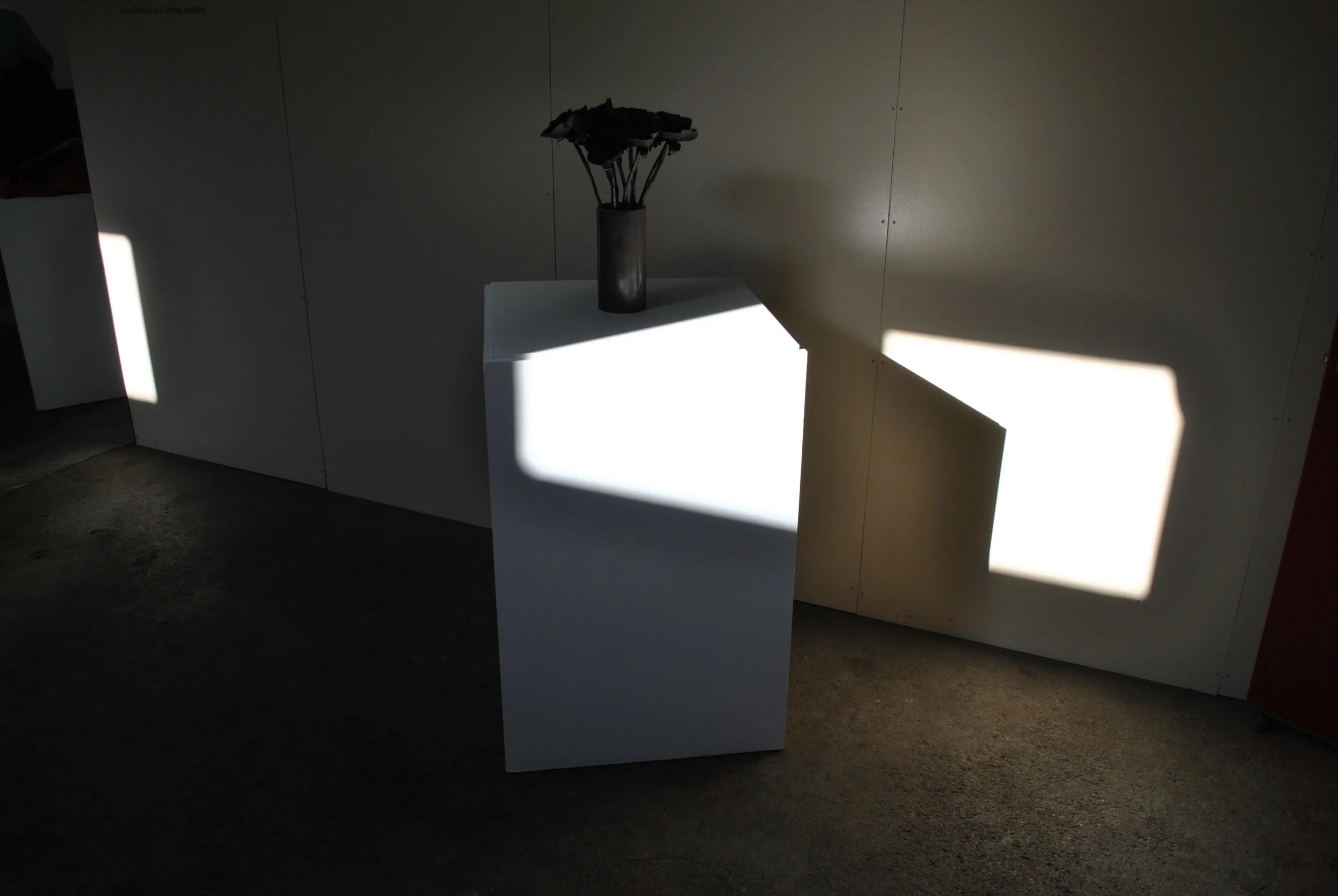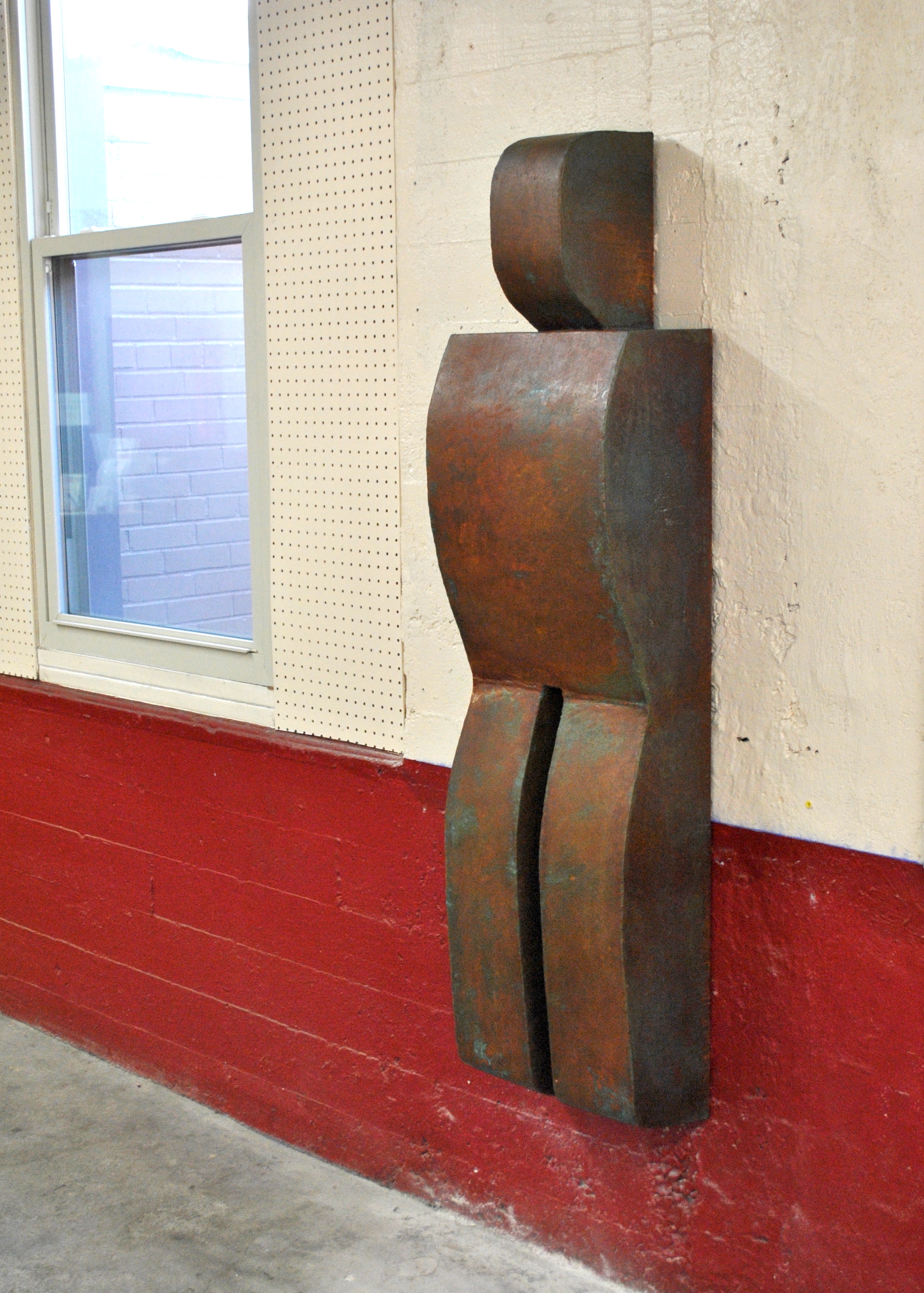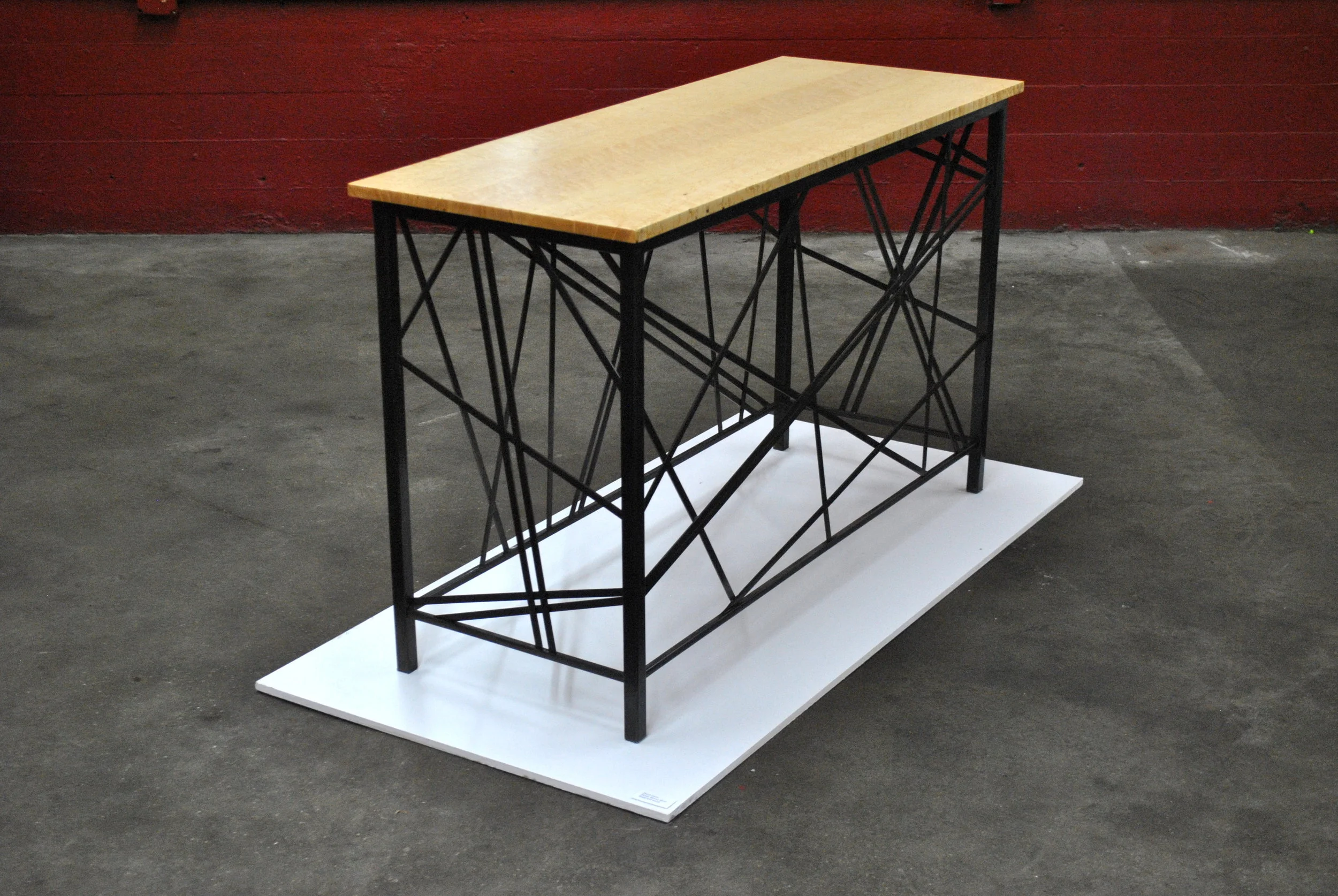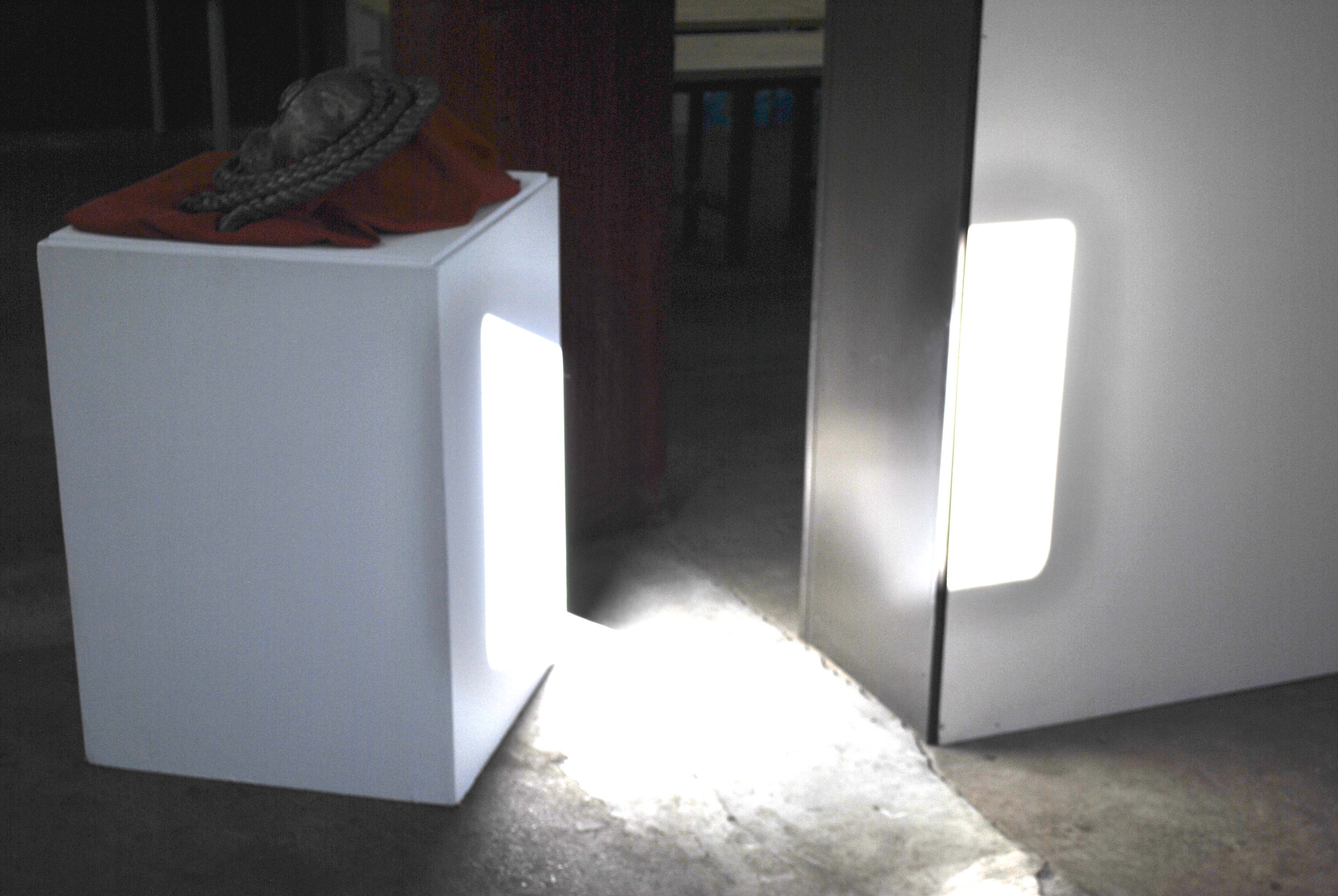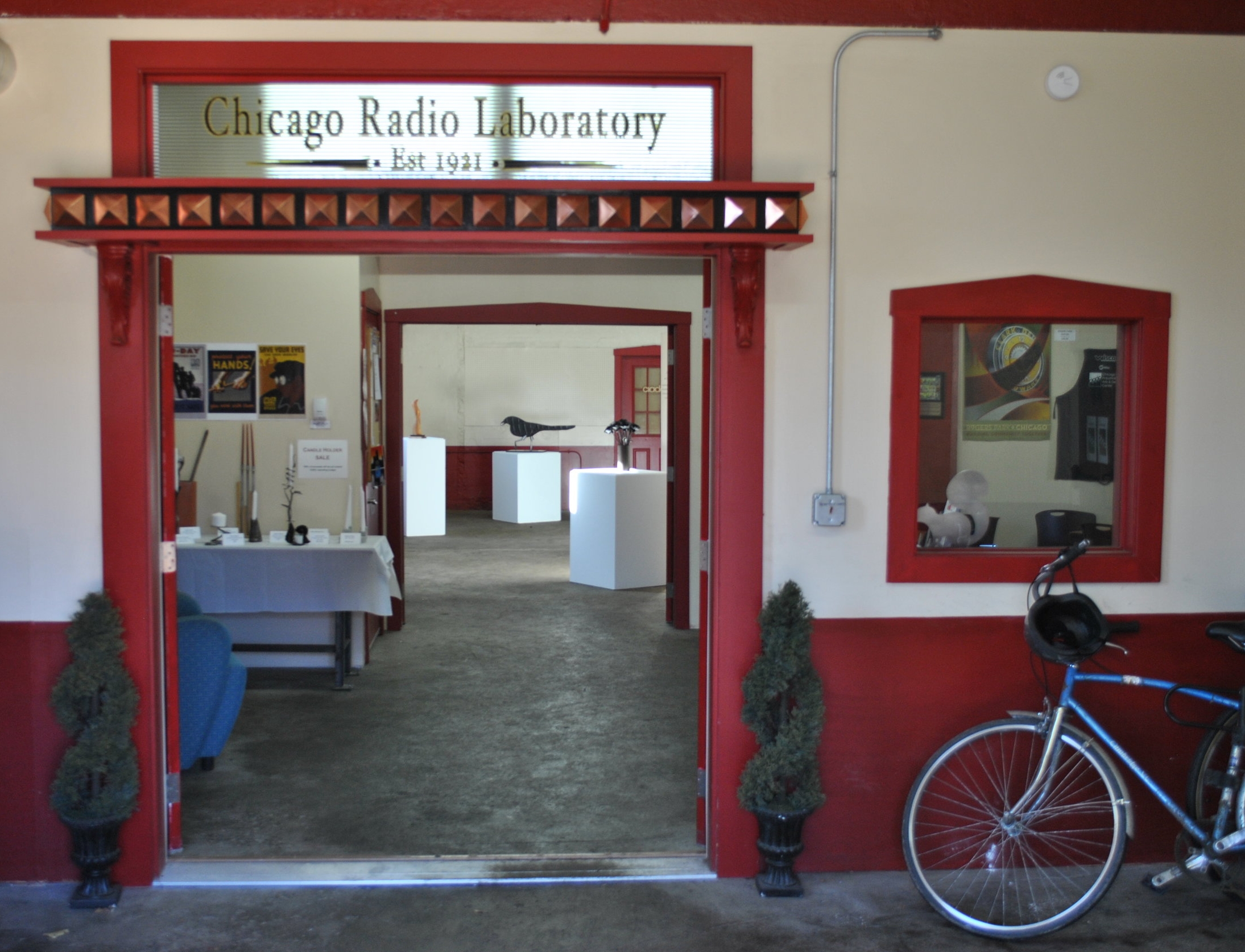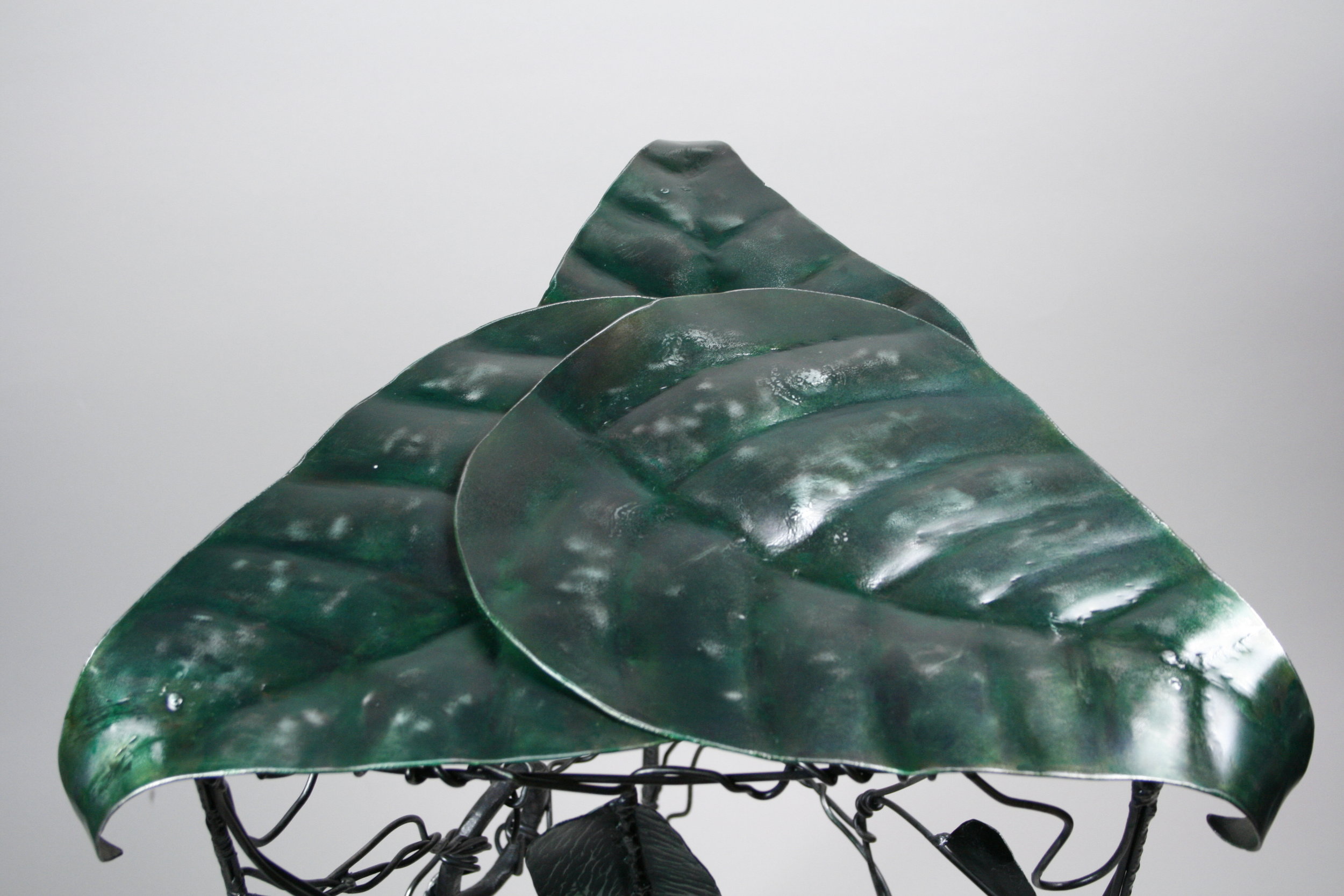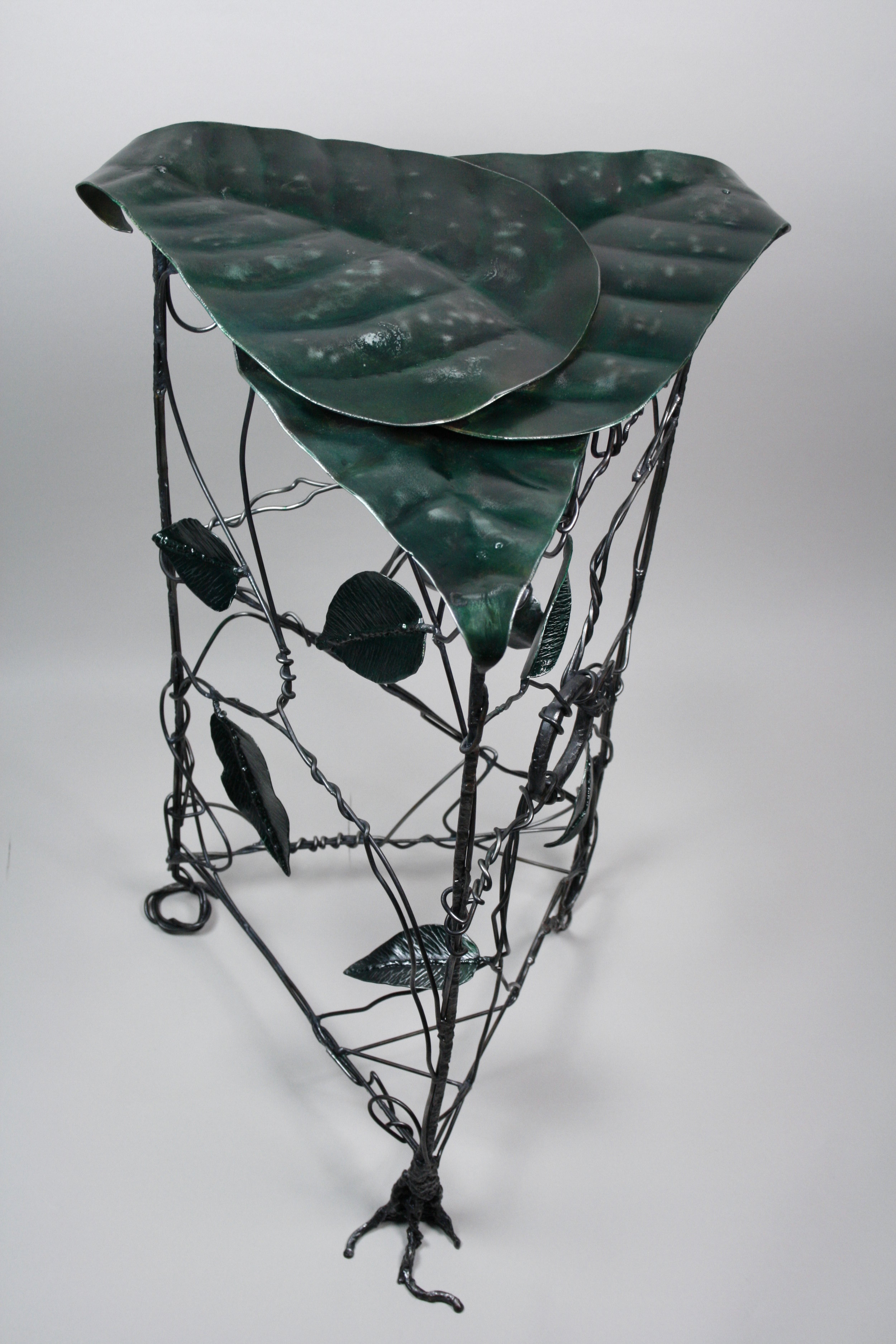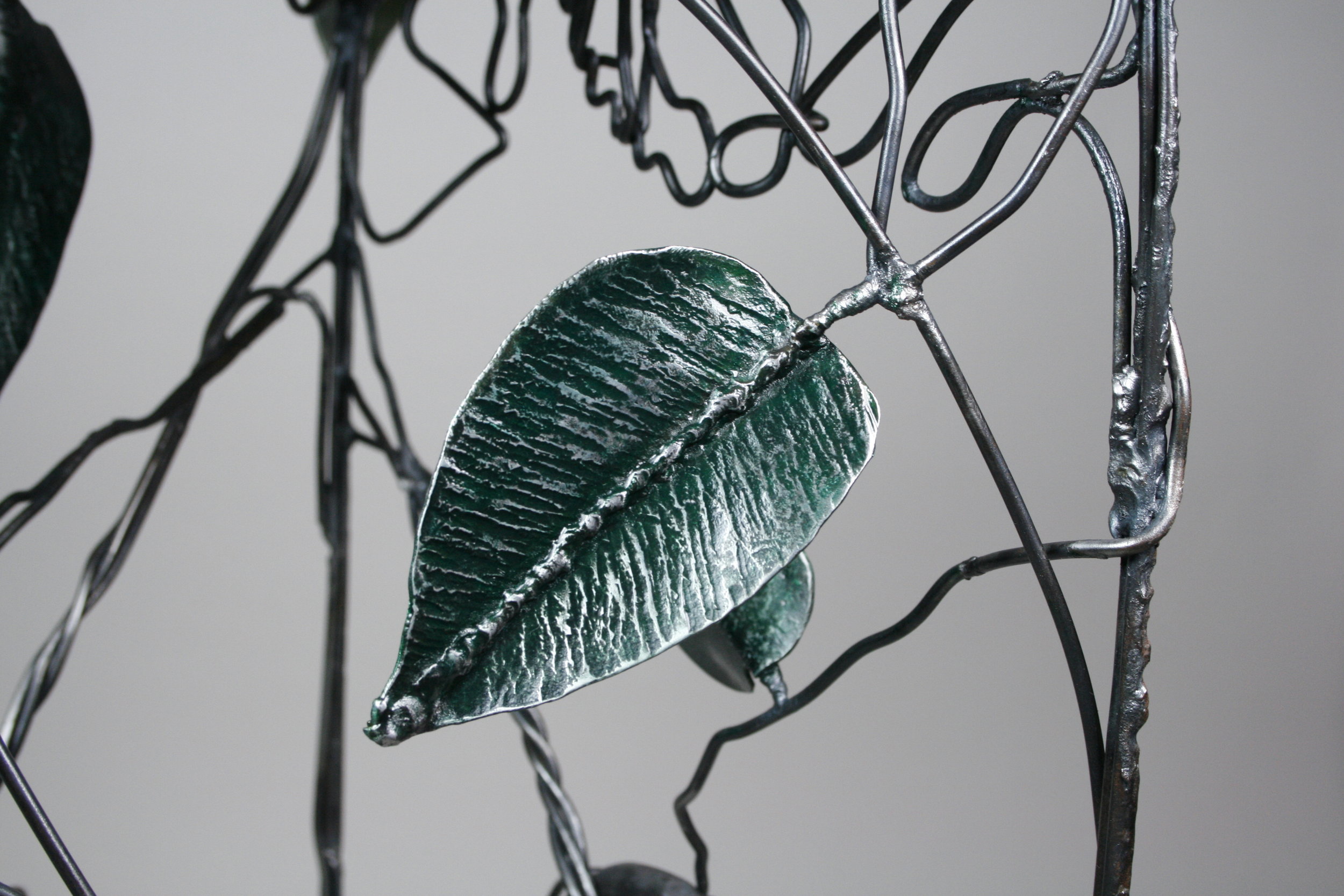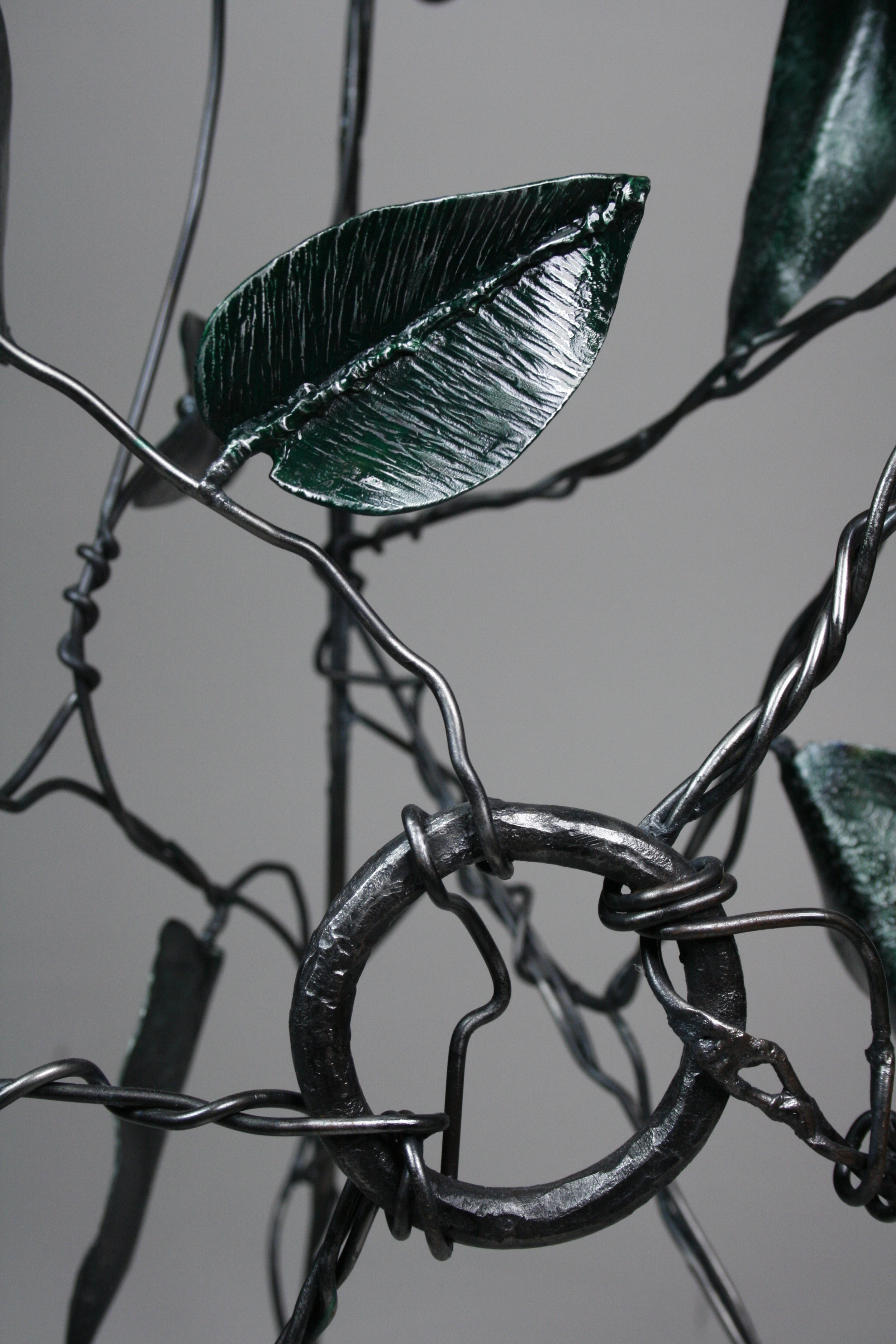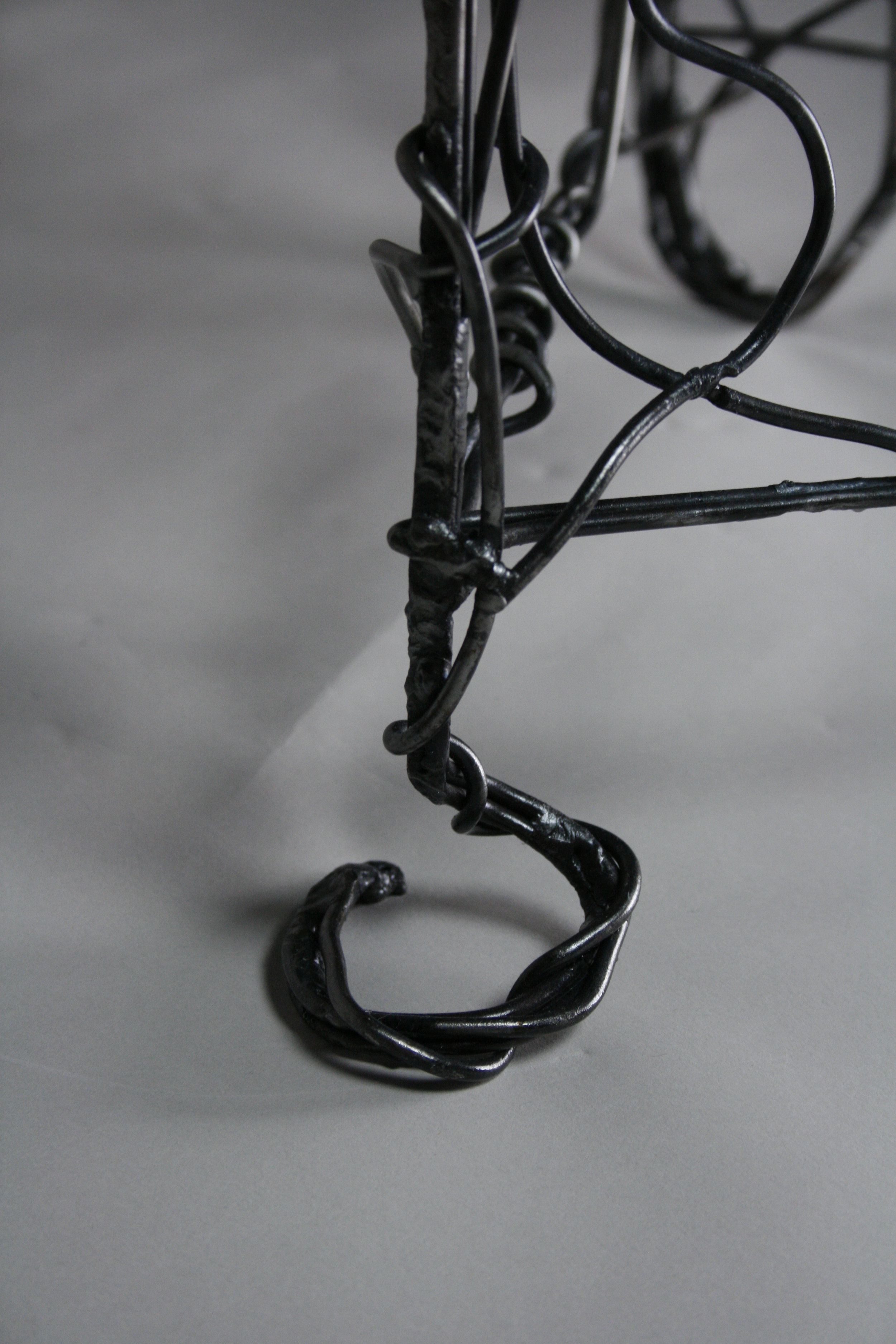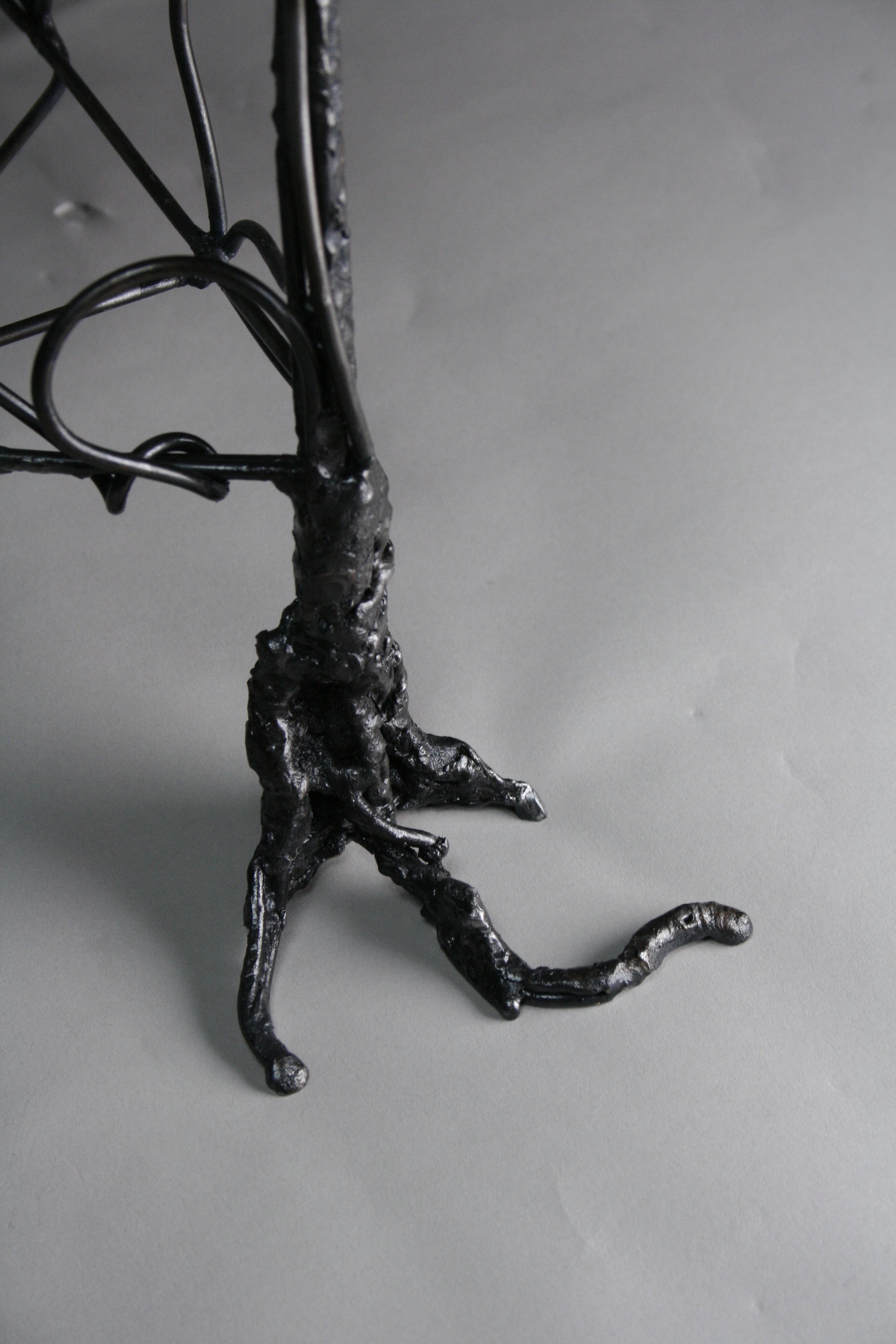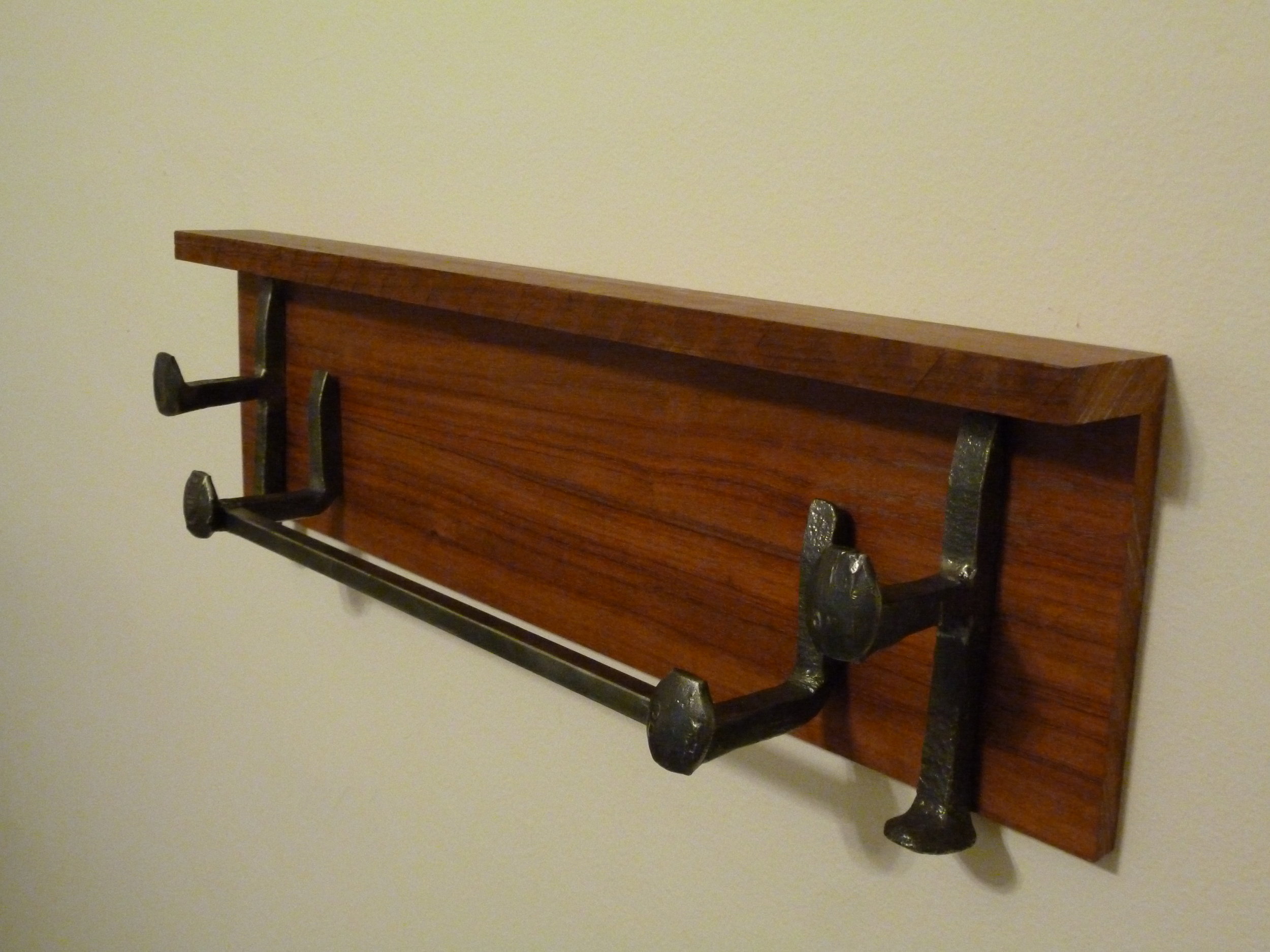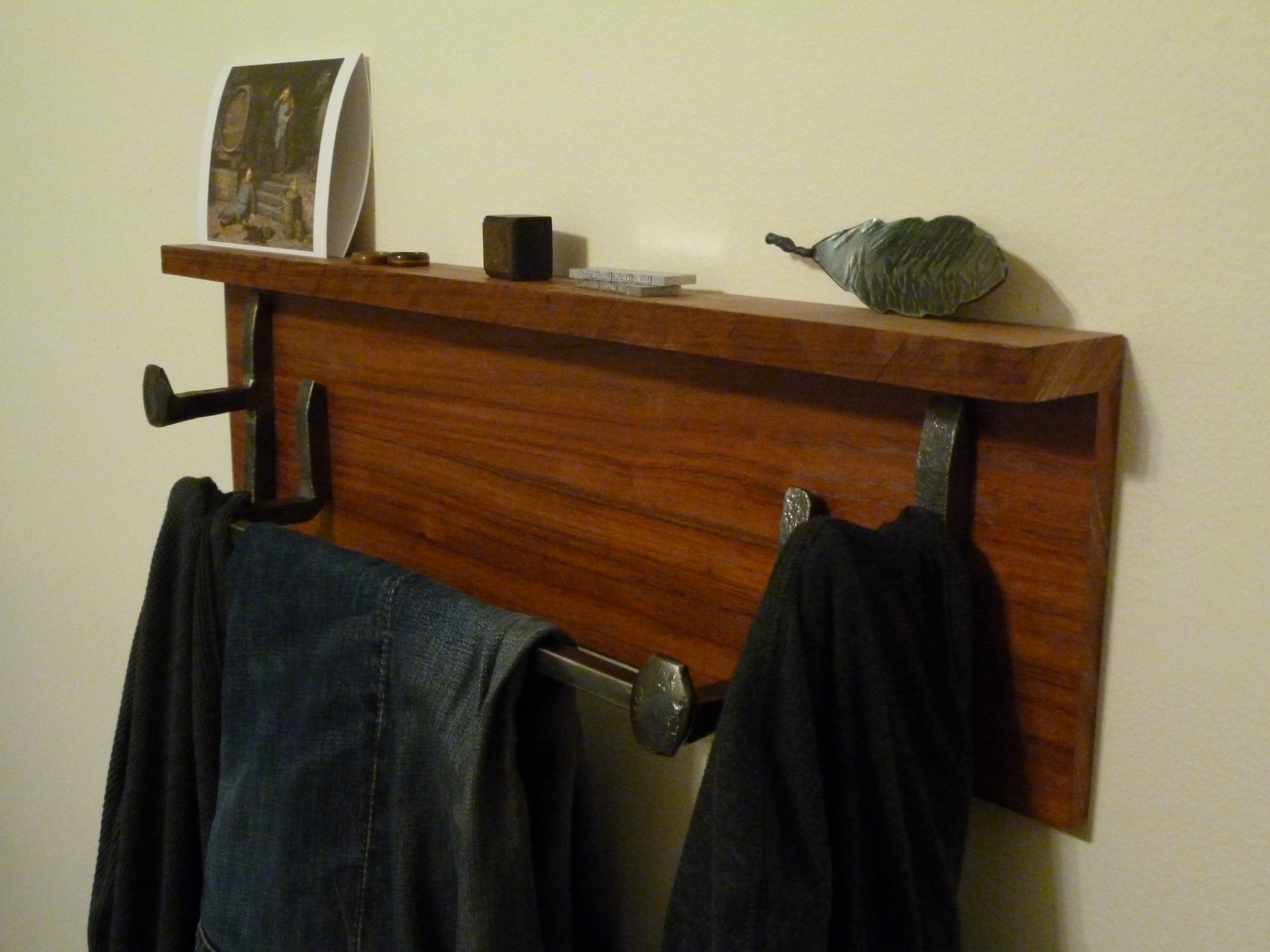NAS: Doing the table with inlaid glass – thorough plan, you have to follow everything, or it’s a total disaster. . . .
BB: There was a little bit of improvising, because I realized I wanted it to be something else, and I couldn’t do it, so I was like okay, I’m going to do this thing . . . but, yeah, you had to plan that in advance. So I really liked the freedom of metal, and I love the feel of it, and the weight of it is nice, and I did a lot of things with some metal and some wood combined, and that was a lot of fun. I was mostly doing welding early on, and at some point I discovered forging. And I was like, I love all this other stuff, but this really speaks to me. And I don’t know what about it. . . . It’s very physical. And you can really feel the metal as it moves. I don’t know, I really enjoyed it, and the process of how you get things from point A to point B, I think made a lot more sense to me. It’s not like it’s a complete replacement for any of this other stuff – I still weld things together, but forging is just fun.
NAS: The physical aspects seem particularly pronounced. Is it changing your thought process about the thing you’re doing because you have to be so physical with it?
BB: I don’t know that it changes my thought process so much as, my thought process didn’t work quite as well in other media.
NAS: Yeah, yeah. Okay.
BB: Not that any of them were completely alien or anything, I’m pretty good at figuring that kind of thing out, but this just felt very natural. And after years of doing things where I’m sitting at a desk all day, to be up and swinging a hammer for hours and hours, it’s exhausting and it’s great.
NAS: Nice. Do you have a desk job now?
BB: I have no job now. For the last five years of so, I was a mechanical engineer in product development. We were doing a lot of prototyping and making little test pieces, and stuff like that, and that part I loved, I loved: okay, we need to cobble a thing together. It can look like anything you want, but it really has to feel like this . . . we want to test this thing out. That was really cool. But then there was a lot of sitting at a desk doing CAD, or filling out forms, and things like that, and I was like, this part’s not for me. As that went up and the prototyping went down, I was like, eh. Okay, I’m done.
NAS: Was there a particular project or thing you were making when you started working with the forge where that’s when it clicked, or was it even just the fundamentals, the entry point which sort of immediately made it obvious that this was the thing for you?
BB: I know I talked to Matt [when CIADC opened], and I know that at that point I was already specifically interested in forging. I did a little of it back at Evanston Art Center, but there was maybe a year or two where I wasn’t able to get up there, I was just too busy. I already had my mind on forging, and I don’t remember how I got to that point. Other than maybe it was just that I had done enough of it that it was like, I miss this. I want to weld, but I really want to forge. It might have been that I had the idea I wanted to learn how to forge a knife, to make really nice kitchen knives, or something like that.
NAS: Have you done that?
BB: I’m working toward it, I’ve made several knives just out of scrap metal, but to make a really good knife you need to use high carbon steel, because that allows you to harden it, a knife won’t hold an edge unless you harden it, so just like the tip will fold over. That involves some more complex processes; you have to do heat treating and tempering and stuff like that. So I’m learning a bit about that, how to make them sharp enough, but I’ve gone through the process of getting the rough shape out. It’s something I’d still like to do at some point, it’s sort of always in the background, when I have a spare moment and I’m not sure what else to do, I’ll go ahead and make another rough knife now.
